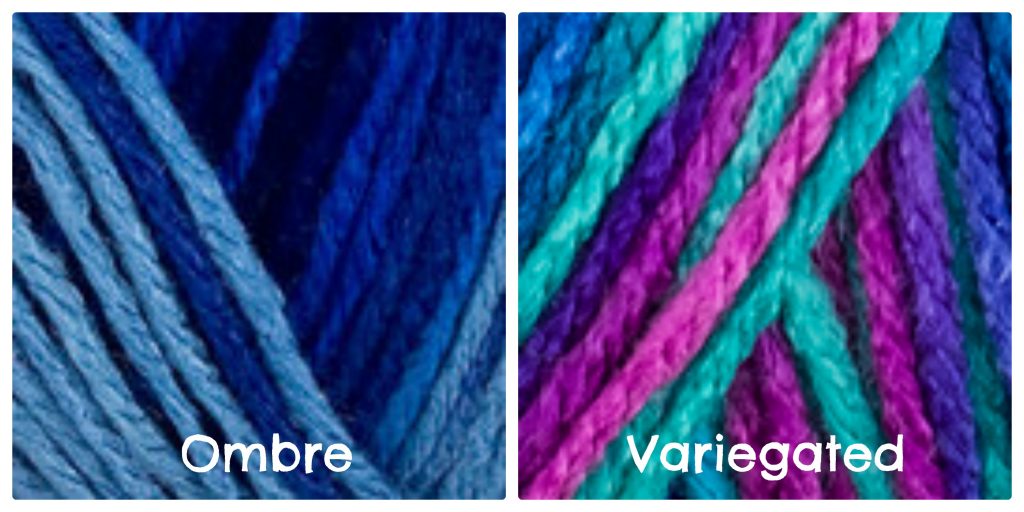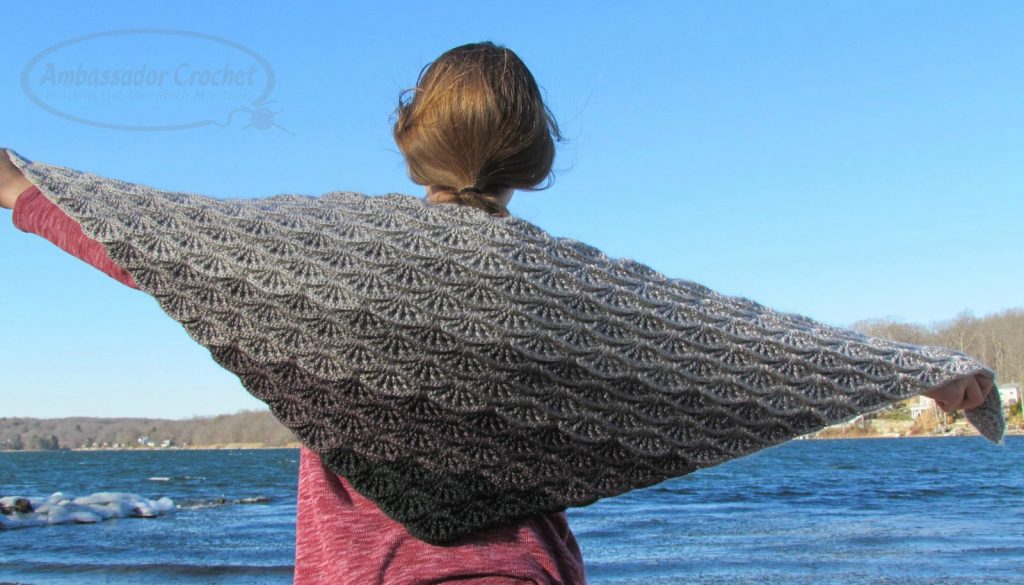Exploring Color Changes in Yarn
*This post contains affiliate links, which means that I may receive a small commission (at no cost to you) if you subscribe or purchase something through the links provided. Please note: I will never become an affiliate partner for a product or service that I don’t use and love! Not all links are affiliates.
Color….it’s what makes our yarns pretty. But do you ever find yourself confused with the terminology that is used when color changes are referenced? There are terms like ombre and variegated that have been around forever. (While they are two very different things some people still use the two interchangeably.) Then there are newer terms popping up like chromatic.
While none of these terms will likely stop you from using or buying a new crochet pattern (or yarn), having them compared may bring some clarity and make it easier to know when and where to use them.
Exploring Color Changes
I decided to break down only terms that reference color changes. It’s funny (ironic funny), the thing that almost all of these have in common is that when you look them up, the color definition isn’t the first thing they refer to. But for the sake of this post, I’m only going to go over the definitions where they reference color changes in our yarns.
Colorway – I started with this specifically, because in essence it means “any of a range of combinations of colors in which a style or design is available.” Basically, you’ll see something to the effect of “available in these colorways.” It’s just letting you know the color(s) that a specific yarn is available in.
Two common terms that I hear confused often are ombre vs variegated. These are not interchangeable and mean 2 totally different things.
Ombre means having tones of color that shade into each other, graduating from light to dark. Terms like gradient and shaded will also be used. Example: black, to grey, to white.
Variegated means varied in appearance by adding different colors. Yarn will have streaks, spots, stripes, or patches of different colors. In essence, yarn that changes colors completely. Example: Yarn that changes from pink, to teal, to white.
Ombre vs Variegated – Red Heart With Love Yarns
Gradient – is used when there is a temperature (color) change. It usually refers to yarn with subtle changes – like the 5 different shades of grey I used with my Gray Skies Gradient Shawl.
Graduated – The term graduated – in terms of color – is similar to gradient. They both gradually change. But the more research I did, the more I realized that graduated can change the scale more drastically. So basically through enough change it could change white to red (using pink) etc. So while they may be able to be used interchangeably in some instances, graduated refers to a larger scale of change.
Chromatic – I’ve seen this reference floating around recently and decided to see exactly what it refers to. Here’s the thing…. it just relates to color in general.
Dictionary.com – pertaining to color or colors.
Merriam-Webster: a. of or relating to color or color phenomena or sensations; b. highly colored
The Free Dictionary – a. relating to colors or color; b. relating to color perceived to have a saturation greater than zero.
I finally looked up “chroma.” The definition is: a quality of color combining hue and saturation. My take….I think this term is/can be used for any yarn with bright, variegated, color changes or striping.
Are there other terms that have you confused or wondering what they’re referring to?
Happy Crocheting!




Thank you so much for this explanation!
You’re welcome! Glad it helped.
Your example of “temperature (color) change” is not correct— various shades (i.e., adding black) is not a change in temperature. A temperature change is from warm to cool, such as orange to blue, or vice versa. But I’ve never heard the term “gradient” used specifically for that situation, but rather as you illustrated— changing from light to dark within the same hue.
Hi Paula,
Temperature may not have been the best term for what I was describing, so I do understand what you’re saying. As far as gradient, that is the actual term that dyers use to describe gradual changes like that. I hope this article was at least a bit helpful for you.